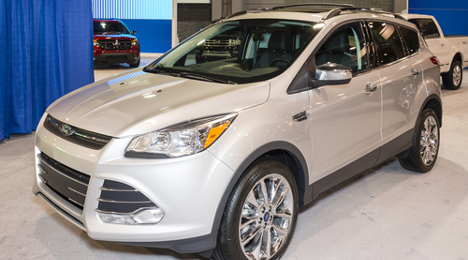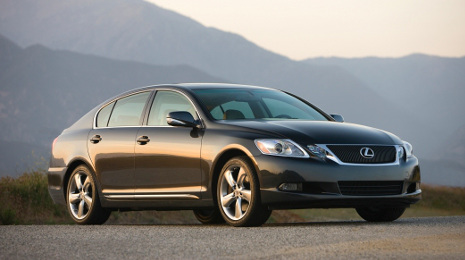There were 9.45 million used-car sales in the third quarter, beating year-ago figures by 2.5 percent, according to Edmunds.com.
And one vehicle age group, in particular, is becoming an even bigger part of that market.
In its Q3 Used Vehicle Market Report, Edmunds said that cars 3 years old and newer accounted for roughly two-fifths (39.1 percent) of used-car sales in the third quarter. That’s up from 36.5 percent in Q3 2014.
“This trend will continue since with each year since the recession, leasing has become an essential tool to sell new cars, which fuels the ‘new-adjacent’ market,” Edmunds said in the report.
Elsewhere in the report, analysts noted: “All indicators point toward the used market getting even younger, as lease volumes have intensified and rental car companies continue to acquire and sell higher volumes of vehicles.
“The higher price-point of younger vehicles blurs the new/used distinction, which will become a prevalent theme for the industry going forward,” they said.
Given these late-model numbers mentioned above, Edmunds expects certified pre-owned to command even more share of franchised dealers’ used-car sales, even with that CPO penetration already at record levels.
High-end electronics, jewelry and apparel evidently aren’t the only popular gift choices consumers with the financial wherewithal to make such a purchase are selecting during the holiday shopping season.
Perhaps piggybacking off of those OEM advertisements showcasing the shiny high-line vehicle in the driveway with the big red bow attached, Experian Automotive discovered more than 10 percent of all luxury vehicle registrations between 2010 and 2014 occurred in December. The next highest month was November, at 8.8 percent.
“Every year as the holiday season nears, consumers can expect to see a number of commercials and marketing campaigns advertising incentives on luxury vehicle models,” said Brad Smith, Experian’s director of automotive market statistics.
“While some consumers may be intrigued by the seasonal deals, others may be driven by the enjoyment of attaching the big red bow to the car as a gift,” Smith continued. “Either way, December is considered — by far — to be luxury vehicle month.
“By gaining insight into the trends that drive this demand, dealers and retailers will be better positioned to manage inventory and target prospective customers,” he went on to say.
Experian also examined the demographic and credit characteristics of consumers who purchase a luxury vehicle and found that they are more affluent and a lower credit risk than the general population. Findings show that individuals who earn more than $100,000 per year are 66 percent more likely to purchase a luxury vehicle, while consumers over the age of 40 are 8 percent more likely, and men are 4 percent more likely.
Furthermore, analysts noticed the average credit score for a luxury vehicle buyer is 746, which is 36 points higher than the credit score for an average new-vehicle buyer.
Additionally, the Experian analysis found that 54 percent of consumers who purchase a luxury vehicle do so with a lease, while 30 percent take out a loan and 16 percent pay in cash.
“Given the increased price for luxury vehicles compared with other vehicle segments, it’s understandable that the average buyer has a more affluent background,” said Melinda Zabritski, Experian’s senior director of automotive finance.
“That being said, it’s clear that these consumers still are exploring ways to keep their monthly payments low,” Zabritski continued. “By choosing to lease vehicles, consumers are able to lower their monthly payments by more than $160 a month.”
Findings from the analysis also show that the top five luxury brands are:
— Lexus: 18.2 percent
— Mercedes-Benz: 17 percent
— BMW: 16.4 percent
— Acura: 9.5 percent
— Audi: 9.5 percent.
At the model level, Experian highlighted the top five are:
— Lexus RX 350: 5.1 percent
— Mercedes-Benz C Class: 4.1 percent
— BMW 3 Series: 4 percent
— Acura MDX: 3.2 percent
— Lexus ES 350: 2.9 percent
Experian closed the topic by mentioning a half dozen other findings for its analysis, including:
• The average loan amount for a luxury vehicle is $42,876, nearly $14,000 higher than the average new vehicle loan amount.
• During the third quarter of 2015, the average monthly payment for a luxury vehicle was $755, approximately $273 higher than the overall average monthly payment for a new vehicle.
• Tesla has the highest average monthly payment for luxury vehicles at $1,285, while Acura has the lowest, at $605.
• The average monthly lease payment for a luxury vehicle is $592, approximately $194 higher than the average new vehicle monthly lease payment.
• The average interest rate for a luxury vehicle is 3.1 percent, compared with 4.6 percent across all vehicle segments.
• Sport utility vehicles are the top luxury vehicle body style (46.4 percent), followed by sedans (41.8 percent) and coupés (6.5 percent).
You know what else is quite popular in December? Certified pre-owned cars, which may be another strong option for your customers.
The National Association of Minority Automobile Dealers and IHS Automotive have partnered together to create their first Diversity Volume Leadership Awards.
These awards will recognize makes and models that garner the highest new-vehicle volume registrations based on model year for the following consumer segments:
- Ethnic consumers (consumers of African-American, Asian, Hispanic or Native American descent)
- Women (of any ethnicity)
- Ethnic millennials (new vehicle registrants aged 18-34)
The recipients of these awards will be determined based on IHS Automotive's new-vehicle registration data from the 2015 model year (registration volumes from October 2014 through September 2015).
IHS says this year’s awards are based on more than 13 million new-vehicle registrations.
"Ethnic buyers represented 28 percent of all U.S. new-vehicle registrations in 2015, and are one of the fastest growing audiences," said Marc Bland, vice president of diversity and inclusion at IHS Automotive. "In the past year, their volumes have grown 150 percent faster than the rest of the industry — and it's important to recognize their influence on vehicle purchases and honor the brands that dedicate resources to diversity efforts."
The Diversity Volume Leadership Awards will include the following categories, according to NAMAD:
2015 Diversity Volume Leadership Awards categories
| Volume Leaders by Ethnic Consumer Group |
Ethnic Volume Leaders by IHS Automotive Regions |
Volume Leaders – Millennials and Women |
| Top Vehicle – African American |
Great Lakes Region |
Top Women's Vehicle |
| Top Vehicle – Hispanic |
Mideast Region |
Top Women's Luxury Vehicle |
Top Vehicle – Asian Pacific
Islander |
New England Region |
Top Ethnic Millennial
Vehicle |
| Top Vehicle – Native American |
Plains Region |
|
| Top Luxury Vehicle – African American |
Rocky Mountain Region |
|
| Top Luxury Vehicle – Hispanic |
Southeast Region |
|
| Top Luxury Vehicle – Asian Pacific Islander |
Southwest Region |
|
| Top Luxury Vehicle – Native American |
Western Region |
|
| Top Overall Ethnic Vehicle (Luxury or Non-Luxury) |
|
|
"This awards program will recognize the brands that the multicultural community is buying and also recognize manufacturers that are dedicating marketing efforts to this growing segment," said Damon Lester, NAMAD’s president.
The winners will be announced during the Diversity Volume Leadership Awards before the North American International Auto Show on Jan. 10.
Certified pre-owned sales reports for November are just now beginning to surface, but here’s an early look at how some brands fared last month:
At Ford, its CPO programs combined for 22,371 sales in November, compared to 22,552 in November 2014. Through 11 months, they have sold 270,194 CPO units, against 249,095 certified sales in the year-ago period.
Mazda sold 2,631 CPO cars last month, versus 3,593 certified sales a year ago. Year-to-date sales have reached 36,019, down from 39,484 through November 2014.
Volkswagen had 5,224 certified sales in November (down 33.3 percent year-over-year), and its year-to-date sum is at 81,504 CPO sales (down 3.7 percent).
Volvo moved 1,351 CPO units for the month, compared to 1,107 in November 2014. Through 11 months, there have been 18,354 certified Volvo sales, up from 12,881 during the year-ago period.
Hyundai sold 6,671 certified vehicles in November (down 18 percent) and has moved 86,627 CPO vehicles year-to-date (down 1.3 percent).
The automotive industry has seen a dramatic year so far.
NADA chief economist Steven Szakaly highlighted what he expects will round out to 17.3 million new light vehicle sales by the end of 2015 and further forecasted a figure of 17.7 million for 2016, ushering in the “beginning of the end” for what Szakaly labeled as “pent-up demand” for light vehicles.
And that hunger for light vehicles may soon be waning for used vehicles, as well. But not quite yet.
Jonathan Banks, the vice president of valuation and analytics for NADA Used Car Guide, a division of J.D. Power, also said during today’s conference call that the used-car market has had an incredible year from the standpoint of prices and absorbing used-supply increases, now leading to a post-recession high in used-vehicle supply.
“In fact, according to NADA Used Car Guide’s data, used supply for zero to eight-year-old vehicles is up by 1.9 percent, reaching somewhere around the 17 million mark,” Banks said. “What’s important about that number is it’s the first time we’ve seen an increase in used supply since pre-recession. So it's the first time we’ve seen an increase in used supply and prices have still remained firm because of that pent up demand.”
But as more and more people are purchasing new or new-to-them vehicles, that demand is dropping – and since vehicles are not only lasting longer but finance terms are getting longer than ever, the used-vehicle pool is expected to grow considerably.
Banks expects, moving into 2016, that the pool of zero- to eight-year-old used vehicles will increase by 3.4 percent – and by another 4.5 percent in 2017.
Looking at prices so far this year, Banks also said that prices on zero- to eight-year-old vehicles have been following a fairly consistent, seasonal pace.
“What that means is we’ve seen the prices increase year-over-year in the beginning of the year – January, February and March – which is a normal, seasonal pattern,” Banks said. “We’ve been seeing prices follow a normal pattern through the spring and summer. And in the fall, when you expect to see the most vehicle depreciation, we’ve been seeing that. Except October did somewhat better than what NADA expected. And a lot of this really has to do with the strong demand from the economy improvements.”
But, like mentioned before, that demand is expected to subside – and one key reason behind that may be the predicted wave of lease returns expected over the next couple of years.
“Lease returns will play the most dramatic role in the used supply increases,” Banks said. “In fact, from 2014 to 2017, lease returns alone will grow by about 58 percent. And a lot of that volume is going to be concentrated on some segments that aren’t really the segments that traditionally have this huge amount of off-lease supply. And that would be segments like the midsize car, compact car and compact utility segments, where you see really a high amount of growth in used supply returning to the market as we move out toward 2017.”
Stay tuned to Auto Remarketing as we plan to take a further dive into the data with NADA Used Car Guide to gain a better understanding of when these off-lease vehicles are expected to return and what segments will be prevalent.
You can probably expect nearly 40 million used-car sales this year, according to the latest Manheim Used Vehicle Value Index report.
Citing NADA data, Cox Automotive chief economist Tom Webb said in analysis accompanying the report that that growth in used sales has accelerated since the year’s outset. The full-year sum, he said, should “approach 40 million.”
Giving some additional context, Webb noted: “Part of this is ‘forced churn’ created by soaring new vehicle sales, but it is not churn conducted at a loss. Indeed, net profit margins are strong.”
As Auto Remarketing reported earlier, there were more than 30.7 million used sales in the first three quarters of the year, which beat last year's pace by 1.8 percent, according to NADA.
In late October, TrueCar was predicting the industry would reach $640 billion in used-vehicle revenue this year (up from $599.7 billion a year ago) with 38.4 million used cars sold, a 3.8-percent increase over 2014.
Another solid sign is the fact that the seven publicly traded dealership groups* have gone 25 consecutive quarters with same-store retail used-unit sales increasing, Webb said. In the most recent quarter, they were up nearly 5 percent on a sales-weighted basis.
“Although the average gross margin on these sales fell to a new low during the quarter, operating efficiencies and greater throughput per store produced record used-vehicle department profits,” Webb noted.
As for the new-car side, the SAAR was above 18 million in both September and October, Webb said, with the year-to-date SAAR at 17.3 million.
“The net impact of the new vehicle environment will likely remain benign relative to used vehicle residuals for the remainder of the year; but next year’s spring market may see a smaller bounce in wholesale pricing if a leveling, or declining, SAAR spurs additional incentive activity,” Webb said.
Staff writer Josh Hyatt contributed to this report.
*Note: Webb indicates that, "For this analysis, CarMax’s fiscal quarter was shifted forward one month to correspond with the other groups that report on a calendar year."
There’s a lot of chatter regarding the new-vehicle sales heading into the winter, with Kelley Blue Book’s most recent estimate at 17.4 million for the year. But dealers aren’t just concerned with the flash of new sales — they know many of those vehicles will be coming back to their lots eventually, and they want to know what to expect.
Not that the new-vehicle figure isn’t impressive, but in the first three quarters of the year, the National Automobile Dealers Association’s data reveals that more than 30.7 million used units were sold in the U.S., a 1.8-percent increase over last year’s results.
And, according to KBB’s analyst Tim Fleming, those used-sales should continue to blossom with the assistance of new sales and vehicles coming back into the used market heading into the coming years.
“We are looking for used-vehicle sales to continue to grow as we move into 2016,” Fleming said. “The new-car market is incredibly strong right now, but that growth is expected to level off in 2016 and 2017.
“Meanwhile, the supply of late-model used vehicles will only increase, thanks to the booming sales growth we’ve (seen) in the past few years, much of which came from leasing. With the increasing supply boosted by more lease returns, prices should continue to ease from record highs seen a few years ago, making the used market even more attractive to consumers,” he said. “More lease returns will also mean more opportunities for CPO, which remains a relatively small part of the market but which has also increased its foothold in the industry in recent years.”
Let’s break that statement down a bit. There appears to be a bit of a consensus in the industry that new-vehicle sales growth will peak in the next couple of years.
Following reports from numerous news outlets covering an event in October, where IHS Automotive made a prediction that new-vehicle sales would peak in 2017, Auto Remarketing caught back up with IHS to confirm that those values were still consistent today.
According to Chris Hopson, IHS Automotive’s manager of North American light vehicle sales forecasting, his organization is still holding to its predicted peak of 18.2 million units to be sold in 2017, before tapering off to around 17 million units by 2022. This continued influx of new vehicles bodes well for the next few years of used sales.
“What we’re seeing right now, helping to help support new-vehicle sales, could have a trickle-down effect come the next 48 months maybe to the three- or four-year outlook,” Hopson said.
Jeff Schuster, the senior vice president of forecasting at LMC Automotive, in partnership with J.D. Power’s new-vehicle retail sales report for October, provided a sales outlook, as well.
“The tenacious pace of auto sales since May, combined with the current favorable position of the U.S. economy, is increasing the level of upside potential to 2015 by 100,000 units, while nearly wiping out any downside risk,” Schuster said. “Looking forward, the forecast for 2016 is 17.6 million units, but growing economic stability and consumer confidence could easily push light-vehicle sales toward 17.8 million units next year.”
Hopson says the high uptick in lease rates will fuel those vehicles returning to the used market. Jessica Caldwell, the executive director of strategic analytics at Edmunds.com, said that 29 percent of the new vehicles purchased in October were leased, the highest percentage since March.
One thing that Hopson also says the industry needs to pay attention to are loan terms lengths, which are currently the highest the industry has ever seen. With longer loan terms and credit moving up, people tend to hold onto their vehicles longer, adding another dynamic when trying to predict used-vehicle supply possibilities. Hopson still has questions for the situation, which has no clear answer at this time.
“Is this going to be something that changes some of the dynamics of what we’ve seen historically on vehicle ownership and how it flows through the used market?” Hopson conjectured.
We’ll have to wait and see.
Curious how CPO results favored through last month? Check out Auto Remarketing Editor Joe Overby’s analysis here.
Penske Automotive Group posted solid gains in the third quarter of 2015, highlighting a 7.7-percent year-over-year increase in overall used-vehicle retail unit sales worldwide.
The group has maintained that pace all year, with a similar jump – 7.8 percent, to be exact – in overall used retail units sold in the first three quarters of the year compared to the same period in 2014.
Company chairman Roger Penske, referring to overall operations worldwide, expressed satisfaction with his company’s results.
"We are pleased to deliver another record quarter, including double-digit growth in revenues, income from continuing operations and earnings per share," Penske said. "The diversification offered by our business highlights the opportunity we have for continued growth. At current levels, the year-over-year decline in exchange rates begins to subside during the fourth quarter which, coupled with the strong sales environment in both the U.S. and U.K. vehicle markets, and a robust medium and heavy-duty truck market in the U.S., we expect will continue to drive our business forward."
Take a look at the charts below to compare how the unit movement listed above compared to the revenue and profit streams created by used vehicles for Penske’s operations worldwide throughout the third quarter and year-to-date.
Penske made a point during his company's third quarter financial results conference call to note that the volatility in currency exchange, especially with the British Pound, played a role in the decreases in gross profit for the company overall.
Penske Q3 Glance at Used-Vehicle Results (Worldwide)
| Revenue (in millions) |
2015 |
2014 |
% Change |
| Used-vehicle retail (consolidated) |
$1,394.8 |
$1,303.2 |
7 |
| Used-vehicle retail (same-store) |
$1,364.3 |
$1,303.2 |
4.7 |
| Unit Sales |
|
|
|
| Used-vehicle retail (consolidated) |
51,031 |
47,363 |
7.7 |
| Used-vehicle retail (same-store) |
49,495 |
47,363 |
4.5 |
| Average Gross Profit Per Unit |
|
|
|
| Used-vehicle retail (consolidated) |
$1,652 |
$1,807 |
(8.6) |
| Used-vehicle retail (same-store) |
$1,685 |
$1,807 |
(6.8) |
Penske YTD (Q1-Q3) Glance at Used-Vehicle Results (Worldwide)
| Revenue (in millions) |
2015 |
2014 |
% Change |
| Used-vehicle retail (consolidated) |
$4,060.7 |
$3,773.8 |
7.6 |
| Used-vehicle retail (same-store) |
$3,978.4 |
$3,742.4 |
6.3 |
| Unit Sales |
|
|
|
| Used-vehicle retail (consolidated) |
148,718 |
137,973 |
7.8 |
| Used-vehicle retail (same-store) |
145,053 |
136,686 |
6.1 |
| Average Gross Profit Per Unit |
|
|
|
| Used-vehicle retail (consolidated) |
$1,732 |
$1,902 |
(8.9) |
| Used-vehicle retail (same-store) |
$1,749 |
$1,906 |
(8.2) |
*Data from earnings release
Penske also said that the company’s overall strategy moving forward is to continue to apply considerable emphasis on improving gross profit.
When asked about the group’s used-supply strategy and thought process when going into the fourth quarter, the company’s chairman summarized the situation in Q3 region-by-region.
“I think if we look at used, it kind of followed the lower new-car premium volume in the Northeast. And I would say that’s the whole Northeast, so we were actually down on units, probably around 500 units, in used in the Northeast,” Penske said. “But gross profit, when you look at it, was up overall about $200 per unit. In the Central (U.S.), we had an increase where we didn’t have that impact on used. From a sales perspective, we were up 700 units and we were down a little bit on our used gross profit, probably around $90. In the West, we were flat on gross profit and really flat on units.
“But overall, what I think we have to do is start early and look at our strategy for inventories on used cars.”
Penske then broke down the used inventory situation by predicting a possible wave of incoming off-lease vehicles.
"I think managing our inventory down is going to be key because there will be a lot of cars coming off lease, and I think residuals will take somewhat of a beating as we get into Q4 and getting into the first quarter, or Q1," Penske said. "So we want to have our inventory balanced properly.”
AutoNation continued its upward movement in the number of used vehicles retailed during the third quarter, pushing its total through the first nine months of the year 7.4 percent higher than the same point in 2014.
The dealer group reported on Wednesday that it retailed 56,584 used vehicles in Q3, marking a 1.4-percent uptick from a year ago. That quarterly figure moved the company’s used-retail total through Sept. 30 to 161,376 vehicles, an amount higher by 11,994 units.
Like dealerships of all sizes are experiencing, AutoNation also saw its gross profit on those retailed used vehicles soften in Q3. The latest figure dipped by $109 year-over-year to come in at $1,513.
Helping to pick up the slack, AutoNation made a $145 improvement in F&I gross profit as the metric stood at $1,546 at the close of the quarter.
That retail used performance as well as the F&I activity helped AutoNation to generate Q3 total net income from continuing operations of $119 million, or $1.05 per share, compared to net income from continuing operations of $107 million, or $0.90 per share, for the same period in the prior year. The rise represented a 17-percent improvement on a per-share basis.
The company’s Q3 revenue totaled $5.4 billion compared to $4.9 billion in the year-ago period, an increase of 9 percent. Executives cited stronger performance in all business sectors — new vehicles, used vehicles, parts and service, and finance and insurance.
In the third quarter, AutoNation's retail new vehicle unit sales increased 7 percent overall and 5 percent on a same store basis.
“We are very pleased with our strong year-over-year growth across all areas of our business, as well as our 20th consecutive quarter of double-digit year-over-year growth in EPS,” AutoNation chairman, chief executive officer and president Mike Jackson said.
“This quarter we set another record for the highest ever quarterly EPS from continuing operations,” Jackson continued.
“We are pleased with how the AutoNation brand continues to be embraced and with the progress of our digital initiatives,” Jackson went on to say. “Our consumer-friendly websites now generate over 25 percent of unit sales while sales from third-party sources have decreased to under 9 percent.”
And as previously reported by Auto Remarketing on Wednesday, AutoNation is making a major expansion in Texas by acquiring a dozen stores.
Lithia’s leadership has been long touting a goal to average 75 used-vehicle sales per store per month. At the end of the first quarter this year, the group was sitting at roughly 57 units per store.
By the end of September, Lithia’s monthly average has seen a solid gain.
“On a 12-month rolling average, we sold 61 used vehicles per store, up from 55 units in the comparable period last year,” said Bryan DeBoer, the company’s president and chief executive officer. “Our goal to retail 75 used units per store still provides considerable upside in the future.”
Aside from the company’s industrious acquisition strategy, DeBoer says the group is also focusing on strengthening internally.
“We continue to grow used-vehicle sales as inventory resupply increases in the marketplace,” DeBoer said. “Additionally our stores continue to recruit and develop used-vehicle managers with the ability to source, recondition and merchandize used inventories.”
According to the company, several used-vehicle metrics jumped in the third quarter. Here’s a brief breakdown of Q3 same-store results from DeBoer that weren’t specified in the company’s released results:
- Certified unit sales increased 19 percent
- “Core” unit (aged 3-5 years) sales increased 8 percent
- “Value Auto” unit (mileage over 80,000 miles, any age) sales increased 5 percent
With its used-vehicle sales leading the way in revenue stream increases in Q3, DeBoer also mentioned that the company’s used-to-new sales ratio was brought up to 0.83:1.
So how will the seasonal trend of increased supply affect Lithia’s pricing scheme?
“If we look at residual values and we look at what we believe will be future trends, what we're starting to see initially is that there’s starting to be increase supplies in used vehicles,” DeBoer said. “So off-leased vehicles are becoming more prevalent, which would give indication that values may soften a little bit as supply begins to loosen. And I think those trends may continue as the SAAR rates continue to climb as well.”
Sidney DeBoer, the company’s founder and executive chairman, agreed on the pricing situation and clarified his outlook.
“This is kind of a stable position that we’re in now,” he said. “There are no extremes.”
Speaking of lease returns and the large contingency of them anticipated to hit the market, an analyst asked if that would affect the number of used inventory units that Lithia will hold on to.
“Personally, I don’t think so,” Bryan DeBoer said. “I think that helps you grow your business but I don’t think you’re going to reduce your overall inventories because of that because we’re still trying to grow core and valued autos, as well. And remember, core is over half of our business. So even as those off-lease cars grow, I really believe no, it’s not going to affect the inventories.”
DCH integrating well
Lithia’s purchase of one of the largest dealer groups in the country, DCH Auto Group, closed a little over a year ago, representing one of the largest dealership acquisitions in recent history. Using a baseball metaphor this week, DeBoer says it may very well be one of the most painless purchases Lithia has ever made.
“In terms of what inning we’re in, in terms of integration, I would say that we’re in the middle innings. I believe they know who they are and what they want to become,” DeBoer said. “They have a wonderful culture. They are humbly confident, much like we had talked about.
“And I can say this: I think it was the smoothest integration that we may have ever had on an acquisition, including the small ones that were $30 million. This, at $2.4 billion, was really pleasing to see that our two organizations, who if you recall knew each other historically but never were really together at this level, we’re proud to have them as our teammates and companions.”
Want to read more on Lithia’s ongoing acquisition strategy? Check out our story here.












